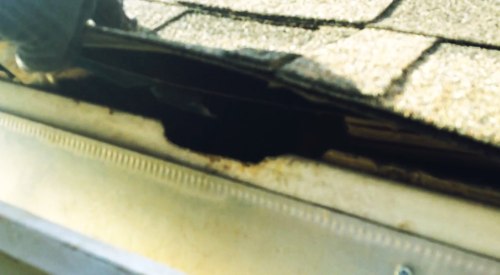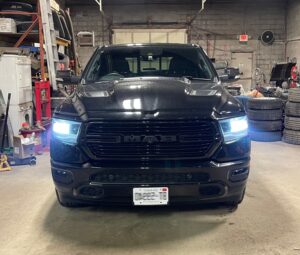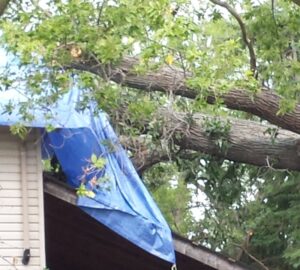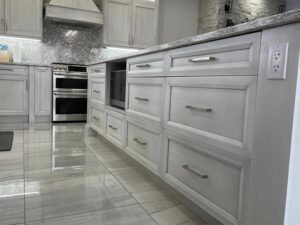Why Setting Up Wildlife Entry Prevention Helps Maintain The Value Of Your Home

When it comes to wildlife and animal control, there are, generally speaking, 4 steps to an effective job and they are the animal inspection, the animal removal, the attic/home repairs/sanitation and the prevention setup. When a home attic has been completely infested by a form of wildlife, in order to get things back in order, they’ll have to opt for the whole package and spend much more than they ever would have if they had opted for an early inspection and an entry prevention method to be put in place.
What is wildlife entry prevention?
Before we get started into prevention, it’s important you understand how the wildlife problem usually transpires and the end result thereof.
For starters as you can suspect, a wild animal will inspect your home for cracks, crevices and holes it can pry it’s way in and out of discreetly. They’re main objective is to stay warm in your attic and if they’re females, probably give birth to their young. From the time they enter your attic, until the time their babies are born and thereafter, these wild animals will be entering and exiting your attic at will.
They’ll be bringing diseases in with them, food, dirt and not to mention the ongoing damage they’ll do to your attic’s insulation, electrical wires and structure of your home. All the above seems minor to the average home owner who has to contend with feces and urine trailing down their drywall into their kitchen or living room. It has happened!
Squirrels make nests and raise their babies there. Raccoons do the same and when their babies are born, you start hearing more noises and scratches than usual. Bats and birds make nests in and around your home and air-vents, and they too have babies they start making their presence known with obvious sounds of flapping wings and chirping. Mice will inflict all sorts of damage to an attic whether they’re suckling or giving birth to babies or not.
All wild animals urinate, and every one of them drops feces. All these circumstances left to themselves will lend to major future issues by where the application of wildlife control could have completely avoid these kind of situations.
Then animal entry prevention
Wildlife entry prevention takes place after the inspection. Most home inspections, (new or old) can yield some form of a susceptibility to wildlife entries. Bats can get into holes as small as dimes, so can mice. Raccoons and squirrels can chew through most metal, and birds find it easy to squeeze through holes and air vents that surround your home.
During the home inspection, each potential entry point will be noted, and taken into consideration when the prevention methods are put in place. Some areas may need special and immediate attention, while others may need it in the future. The critical problems will be dealt with first and the future risks will be noted and dealt with accordingly. Technically speaking, if even a small potential issue is found, there’s no use waiting for it to become serious!
With animal entry prevention, all weak areas of the home, from it’s foundation to the roof have measures applied which will stop wild animals in their tracks. One of these prevention strategies involves installing drip-edge along the roof line. Drip edge is proven to be one of the best wildlife deterrent measures a home can have and it provides a slew of other benefits as well. Your local pest control company will most likely suggest drip edge and other surefire but discreet prevention methods to be added to your home. All you have to do is ask.
The two major factors in pest control
Health and safely. There are two major factors home owners must consider when it comes to dealing with wildlife. One is the healthy and safety of everyone living in your home. The other is related to maintaining and/or even upgrading the value of your property.
When it comes to health issues, it’s almost common sense that an animal left alone in an attic or between your walls can pose serious health risks. Animal residue of all sorts can and eventually will seep down into parts of your home. Any removal company will tell they frequently encounter dead animals that have become stuck in an attic and the end result is not a pretty sight.
You may see stains on your walls or ceiling starting to develop and if you’re unaware it was produced by a wild animal, you’ll clean it up and think nothing of it. If the animal starts urination somewhere else in your attic you’ll never be the wiser but it’s definitely a sign that something bigger is about to happen. But what?
Un-sanitized rot. When wood and insulation are continually soaked, they lose their strength and effectiveness. Exposed wires which are usually chewed through may also fall to the same demise as the rest of your attic. Then there are time when younger mother’s grow too big to get in and out of their original holes so they create other ones.
All this can lead to a warped temperature in your home and higher electricity bills. There’s myriad possibilities to consider and they all intertwine with one another. The end result of urine, feces, and home destruction by wildlife is an unhealthy environment and a generally unsafe place to live in. Have you ever encountered a raccoon in your kitchen in the middle of the night? It’s happened!
Just in the case of mice alone, read up on the diseases that are directly spread by rodents, and try to convince yourself that preemptive animal control is not a logical investment.
Property value. Anyone willing to spend hundreds of thousands of dollars on a home wants to be ensured that they’re home is safe from wildlife infestations among other things. They also want to be ensured there’s been no structural damage, no flooding issues or sanitation issues related to wildlife intrusions, and they want the security that they’re home isn’t an easy target for critters and rodents to find they’re way into.
Little do most people know, that if you one day decide to sell your home and if you have an existing wildlife problem, you’ll have no other option but to disclose the problem to the new owners. If you don’t and you try to avoid it, you can end up getting sued by the new home owner if the damage recurs or manifests itself. You don’t believe me? See how this homeowner sued their neighbour for $400K for not rectifying an ongoing wildlife issue which could have been completely avoided if the problem was addresses preemptively.
Health and property value go hand in hand – your own heath, the health of your family, the future owner of your home and the home’s general security.
It’s quite obvious that setting up wildlife entry prevention on a home to control wildlife problem before they occur is the responsible thing to do and you can save up to thousands in repairs (or lawsuits).
The dangers of allowing wildlife to live in your home go far beyond getting bit. Their presence, although quite adorable and beautiful at times can swirl from one problem into many, and quickly. Stop wild animals in their tracks before they have a chance to get into your attic and get the assurance that your home is truly safe, and sound.




